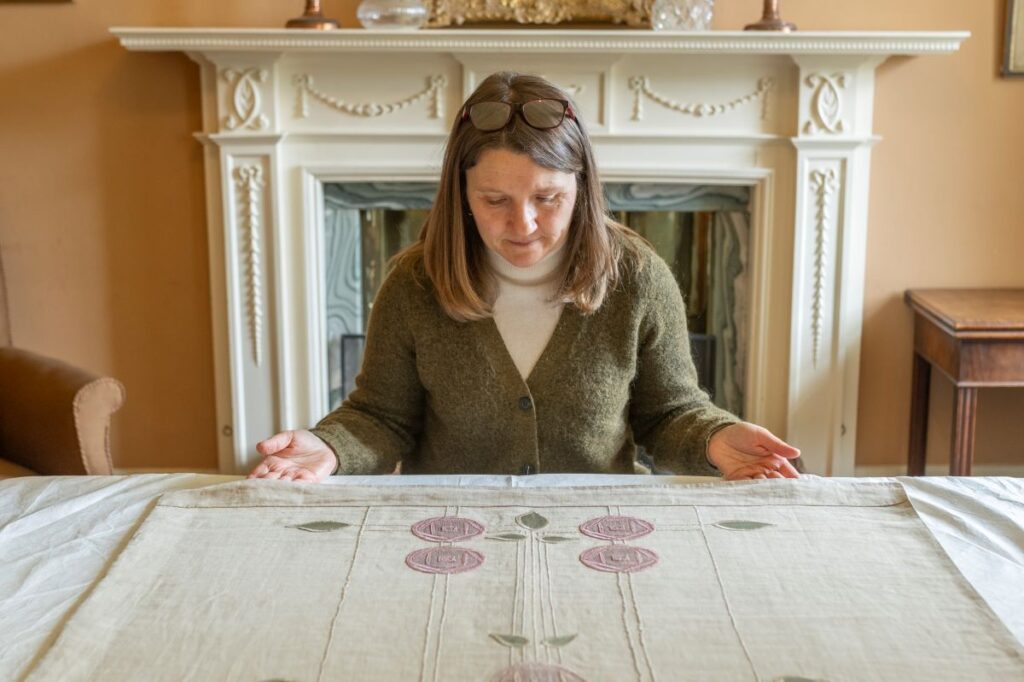
Stitched in time: 200 years of Scotland’s treasured textiles go on display at Dovecot Studios
Treasured Scottish textiles, many of which have never been on display before, will be at the centre of an exhibition at Dovecot Studios this year.
An extraordinary collection of textiles held by the National Trust for Scotland spanning 200 years will come together for the exhibition, Stitched: Scotland’s Embroidered Art.
After two years of painstaking conservation work, many of these delicate pieces are now in a condition to be on public display for the first time ever.
The exhibition will include more than 80 richly embroidered textiles from 1720–1920, including armchairs ,cushions, tea cosies and tablecloths.
Bookended by the ascension of George III to the throne, and the end of World War One, this 200-year period was a unique time for Scottish makers and customers.
A well-known supporter of the arts, George III presided over a period of changing styles in British architecture and interiors, also reflected in textiles.
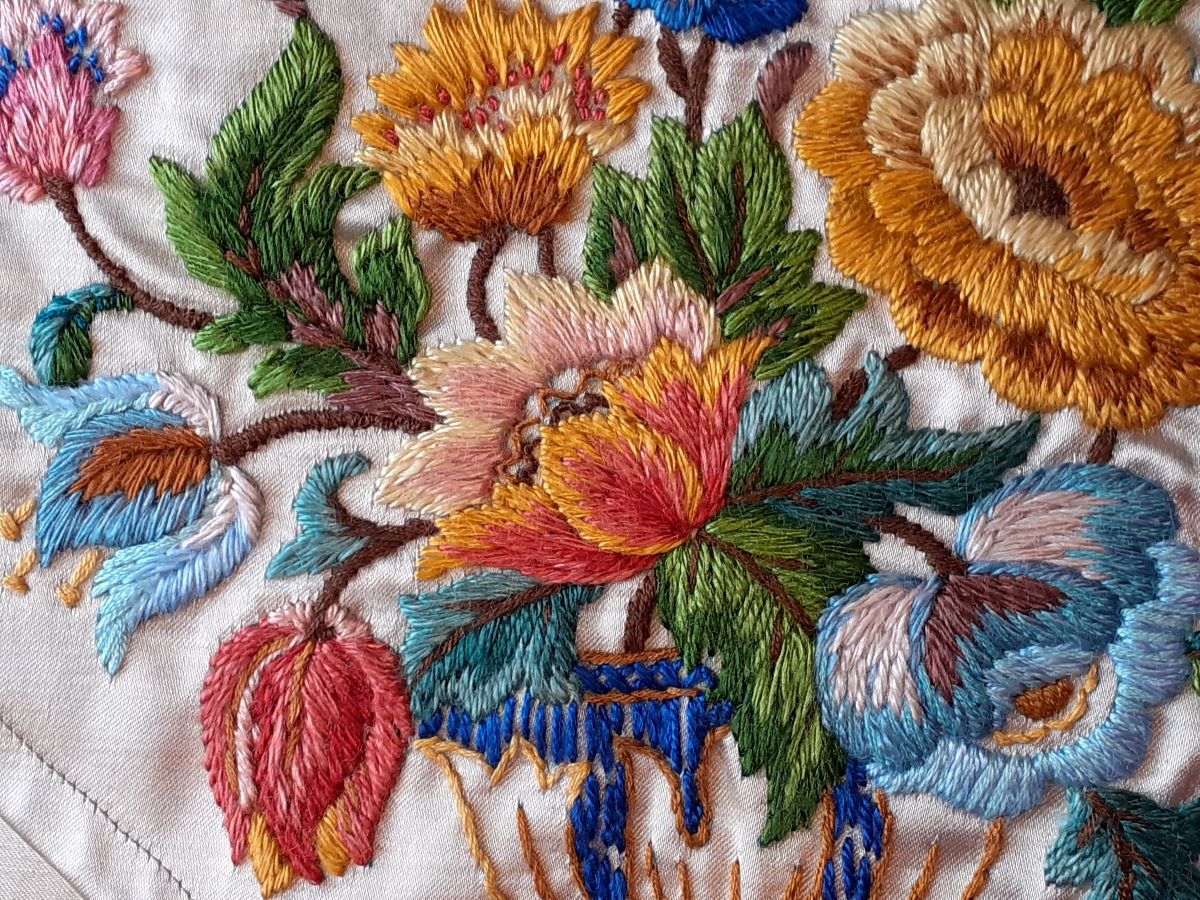
Gold table runner embroidered with flowers (detail) from Hill of Tarvit. Credit: National Trust for Scotland
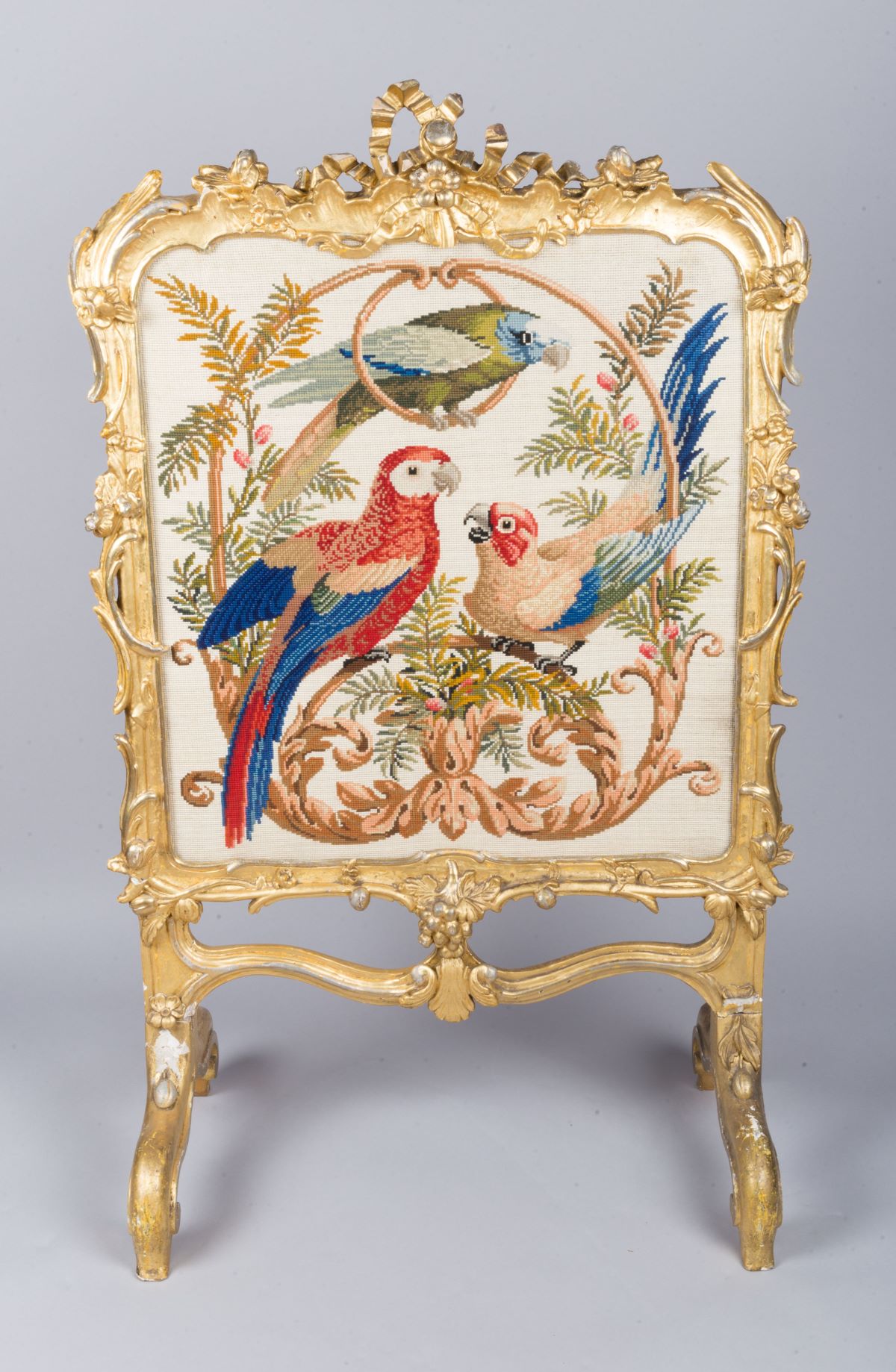
Firescreen embroidered by Lady Augusta Kennedy-Erskine from the House of Dun. Credit: National Trust for Scotland
The expansion of global trade through the East India Company saw design ideas exchanged around the world, while the Glasgow School of Art bolstered the position of embroidery as a serious subject of study in the 19th century.
The exhibition opens with a look at the use of embroidery over these two centuries and how widely it was used from domestic furnishings to decorative pieces.
A primarily amateur pursuit, embroidery crossed the boundaries of socioeconomic status, relatively unrestricted by levels of training, or the availability of materials.
Many of the artists in the exhibition would have been taught by family members, copying originals or creating samplers.
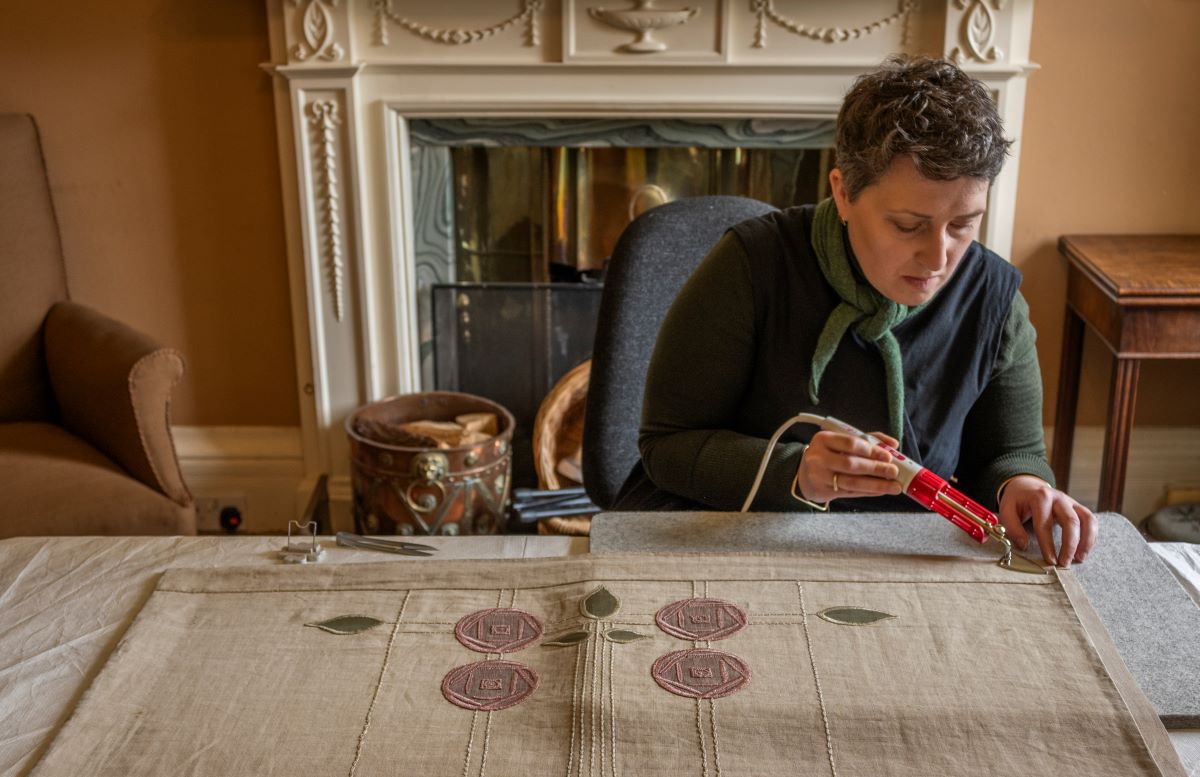
Textile conservator Bevan O’Daly working on a Jane Younger bedcover with an embroidered panel in the Glasgow Style from the Hill House. Credit: Phil Wilkinson
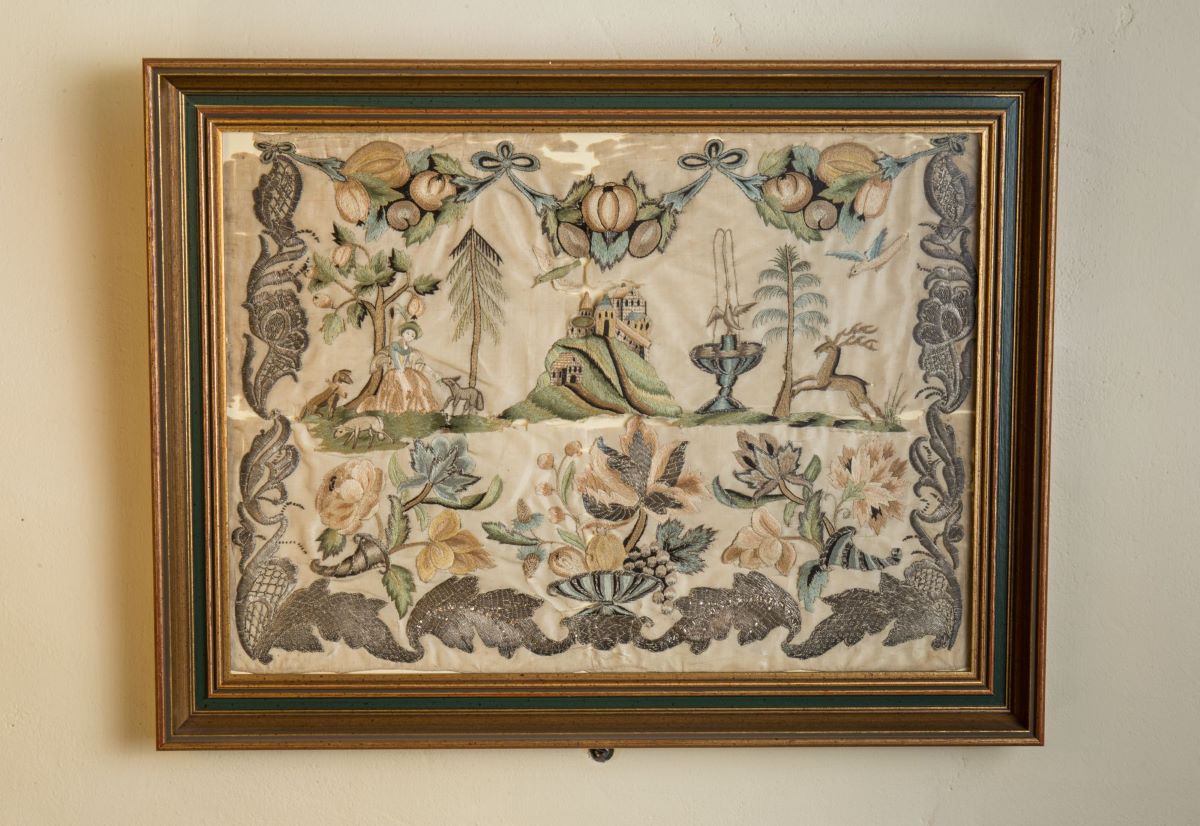
18th century embroidered silk panel from Crathes Castle. Credit National Trust for Scotland
Copied from an Italian original, a gold thread work-table cover from Haddo House, c.1890, on display for the first time, was sewn by Mrs Sandison, a self-taught embroiderer and the daughter of an Aberdeenshire crofter.
Women played a pivotal role in perpetuating embroidery skills in Scotland, passing down traditions through families.
But they also invested time in development schemes, including the 19th-century Kilbarchan Female School at the Weaver’s Cottage and the needlework school set up by Lady Aberdeen at Haddo House.
One grouping of works will focus on pieces embroidered by wealthier women, revealing how their social positions afforded them time to work on ambitious works at a larger scale.
The exhibition reveals the hidden stories of how women influenced Scottish interiors as well as a look at more recent creations, like the conserved early 20th-century linen bedcover, created by Scottish artist Jane Younger in Glasgow Style.
‘Embroidery is often considered the Cinderella of the artworld – these are beautiful items which, because they are usually found in domestic settings, have tended to be overlooked,’ says Emma Inglis from NTS who created the exhibition.
‘By bringing all these pieces together for the first time in a dedicated exhibition, we hope to shine a light on these beautiful pieces and bring them to an audience who will appreciate them as the artworks they are.
‘We hope too, to highlight the talent, creativity and skill of the women and girls who made these unique pieces over two centuries.
‘For many of these pieces, it is the first time they have ever been displayed. After years of being stored in cupboards and drawers, each piece has had a great deal of attention.
‘It’s been carefully researched, its story has been uncovered, along with that of its creator, and any conservation work that was needed has been undertaken too.
‘Everything is now looking its best and is ready to shine, getting the attention artwork of this calibre deserves.
‘The textiles in the exhibition highlight the vibrant trends, influences and personal choices that helped shape the look of the domestic interior in Scotland through 200 years.
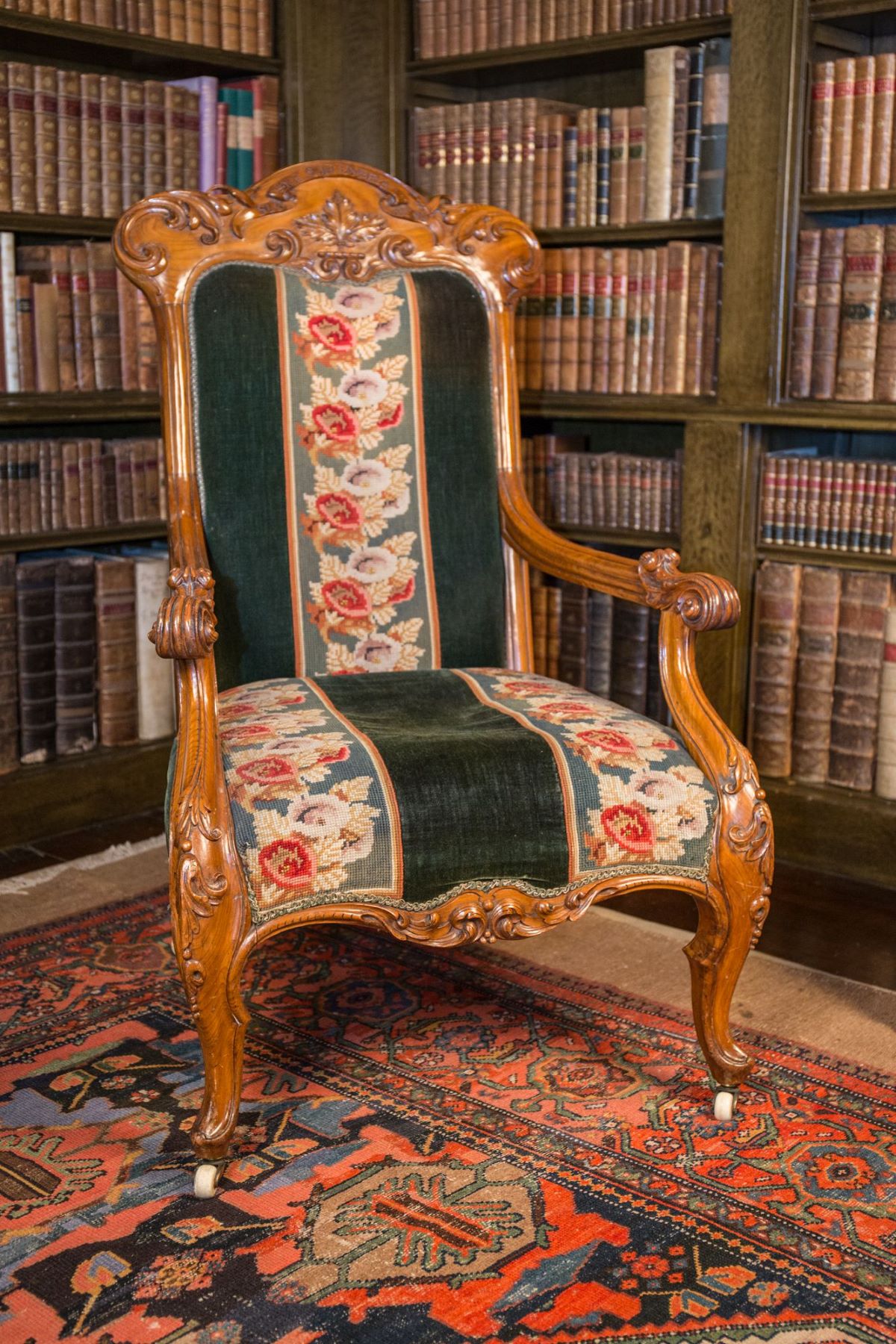
Walnut armchair upholstered with bands of gros-point needlework from Drum Castle. Credit: National Trust for Scotland
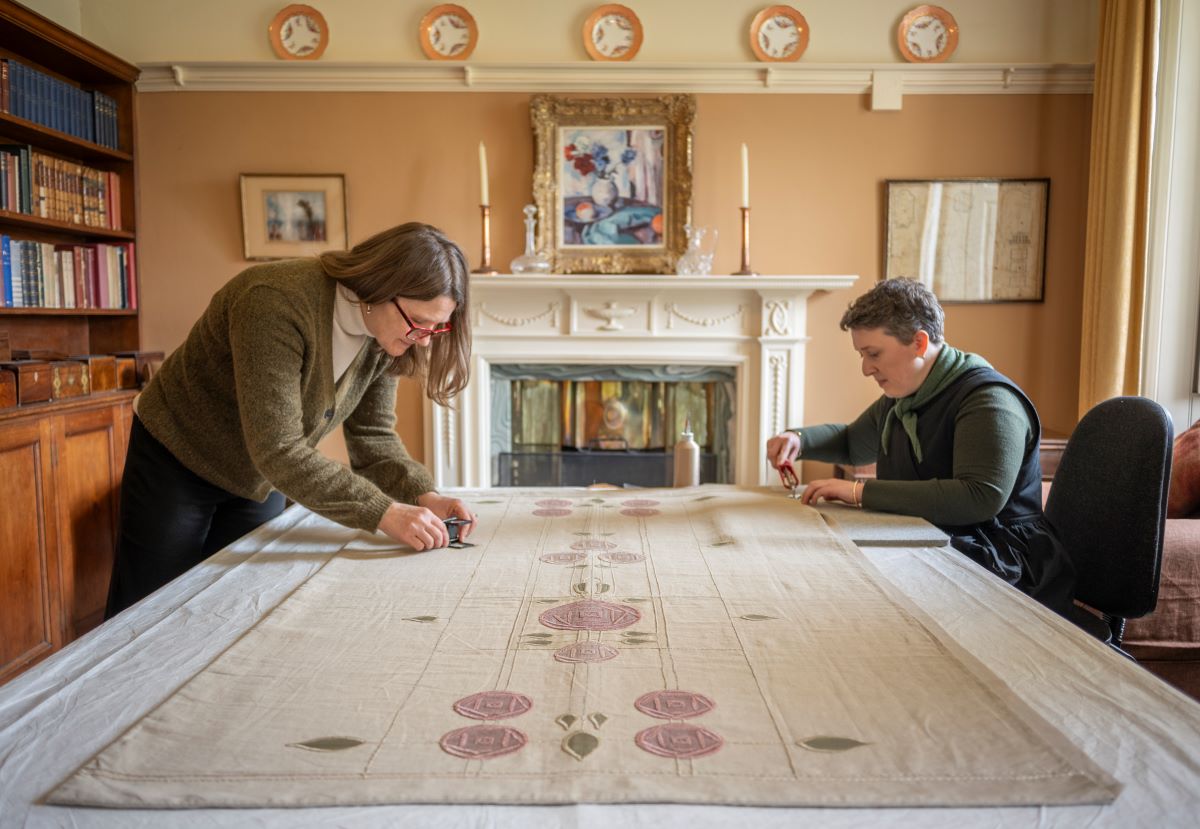
Curator Emma Inglis and textile conservator Bevan O’Daly working on a Jane Younger bedcover with an embroidered panel in the Glasgow Style from the Hill House. Credit: Phil Wilkinson
‘The makers have been chosen for their high levels of skill and artistry, many of them previously underrepresented in public histories of Scottish needlecraft and interiors.
‘By creating this exhibition at Dovecot, we are able to showcase some of the magnificent works within our collection and the care that has gone into conserving them so they can continue to inspire future generations.’
The works on display have been selected from key NTS properties including Newhailes House, Drum Castle, House of Dun, The Weaver’s Cottage and the Hill House.
Following the exhibition, many of the works included will go on public display in their respective properties for the first time.
Stitched: Scotland’s Embroidered Art runs until 18 January 2025.
Read more on Scottish Field’s News pages.
Plus, don’t miss the December issue of Scottish Field magazine.
TAGS

